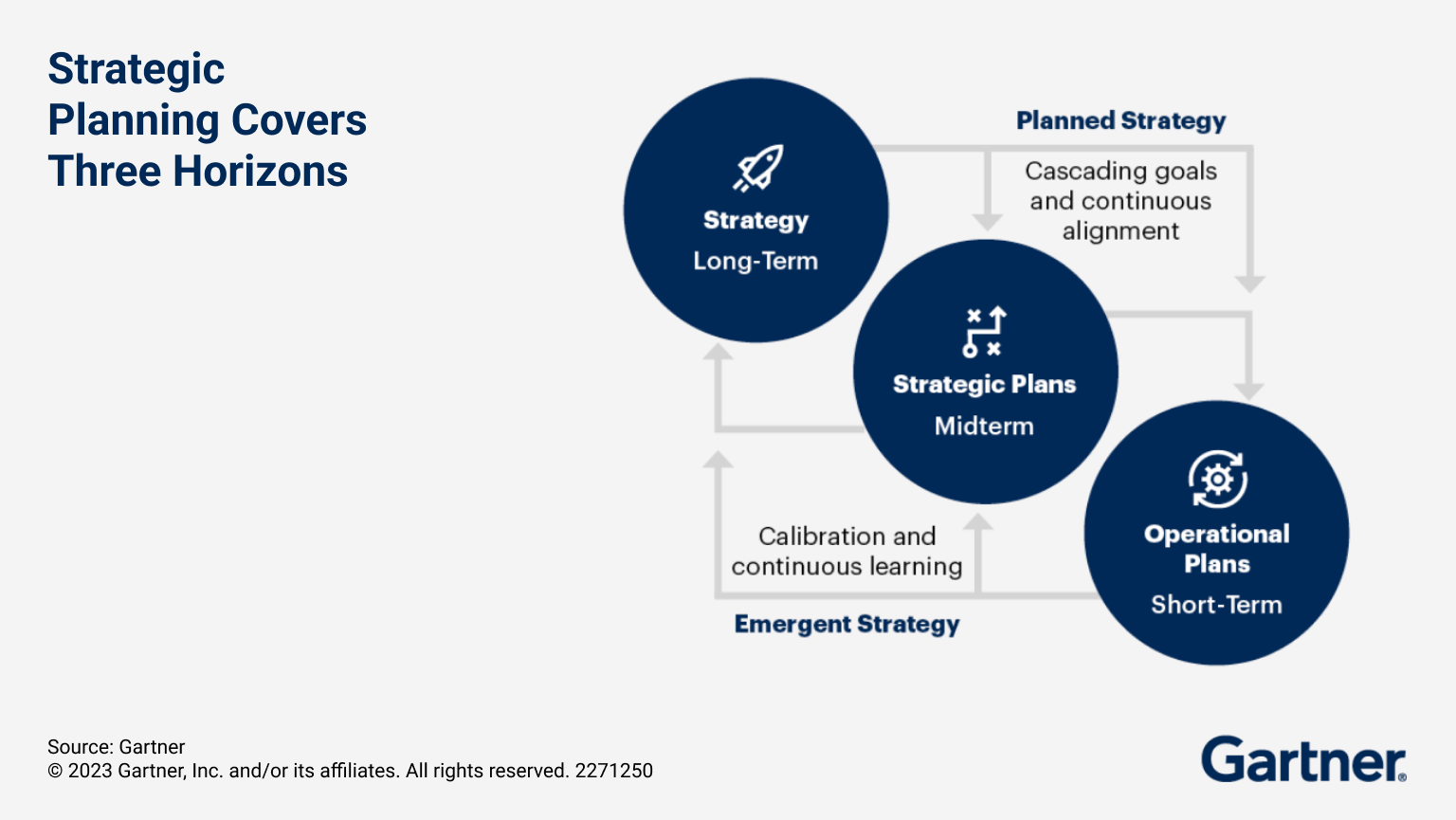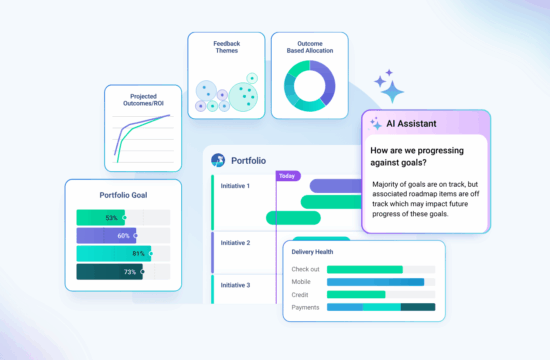According to Gartner, only 47% of enterprises successfully meet their strategic objectives. In product and R&D organizations, this number drops even further—to just 30%, according to a Product Ops HQ survey.
These numbers paint a frustrating picture: despite best efforts, strategic plans often fall short. The impact? Distrust, inefficiency, and missed opportunities. Yet, some organizations do succeed. What are they doing differently?
In this article, we’ll explore:
- The realities of strategic planning and execution in agile product organizations
- Common challenges in achieving strategic plans within an agile, decentralized model
- How to operationalize strategic plans with agility to drive results
Let’s dive in.
Building and Delivering a Strategic Plan in the Context of Agile Product Organizations
A strategic plan connects strategies and execution, describing how the strategy will be executed by identifying the roadmap of initiatives necessary to deliver the strategy. Often the strategic plan is on an annual basis and the operating plan is on a quarterly cadence, as described by Gartner.

For organizations operating within a traditional project-based model, executing strategic plans—while complex—is relatively structured. Techniques from project portfolio management (PPM) and a well-established Enterprise PMO (EPMO) create predictability and control, enabling organizations to stay “on strategy.”
However, for modern product-led, agile organizations, this traditional model no longer fits. The decentralized, fast-moving nature of product operating models introduces challenges across all key areas of strategic portfolio management (SPM), including:
- Strategy mapping
- Investment modeling
- Demand and resource management
- Customer-centric product management
- Agile delivery
Legacy PPM approaches struggle in this environment. The question is: How can companies maintain strategic focus while embracing agility?
Why Strategic Plans Struggle in Agile Product Organizations
In an agile, decentralized product model, nearly every aspect of strategic portfolio management becomes more dynamic—and significantly more complex at scale. Some of the most common challenges include:
- Frequent strategic misalignment due to decentralization – Strategies are centralized at the executive level, and decentralized to the empowered product teams. Without a shared data source, misalignment emerges as context gets lost between leadership and teams.
- Traditional resource allocation models fall short – Unlike fixed-cost project planning, agile product teams operate on evolving priorities. Balancing customer outcomes, financial goals, and resource constraints—such as skill-specific dependencies (e.g., data scientists vs. mobile engineers)—makes traditional ROI-based planning ineffective. Product Ops teams report spending two-thirds of every quarter just on planning.
- Constant changes from customer needs and market shifts – Customer-centric teams must continuously adapt based on insights, creating disruptions in roadmaps and increasing complexity.
- No fixed scope or timeline in agile delivery – While agile delivery enables responsiveness, it also introduces unpredictability, leading to potential missed market opportunities or hidden cost overruns.
- Ripple effects from delays – Dependencies across teams mean that a delay in one initiative can have cascading impacts on multiple strategic objectives.
These challenges create a fundamental disconnect: over 80% of executives—CFOs, CPOs, CTOs, and CIOs—lack a unified view of where product investments are going and what their impact will be. (See Four portfolio risks every CPO must address).
Without this fundamental shared understanding, decision-making at all levels becomes fragmented or even contradictory, causing organizations to fail to deliver on their strategic goals.
So how do successful agile product organizations navigate this complexity?
How to Operationalize a Strategic Plan With Agility
Leading organizations adopt modern strategic portfolio management (mSPM) practices designed for agile, decentralized product operating models. Success hinges on the ability of executives, product teams, operations, program delivery leaders, and cross-functional teams to collaborate effectively in a fast-changing environment.
The key? A centralized, AI-powered platform that serves as a single source of truth, bringing together:
- Shared strategic context – A single, connected view linking executive strategies with product roadmaps to ensure prioritization aligns with business goals.
- Dynamic resource planning – AI-driven modeling to account for skillset fungibility, enabling efficient “one-click” planning and scenario analysis.
- Continuous planning agility – The ability to adjust plans dynamically based on new customer insights, learning, and market opportunities.
- Automated delivery monitoring – AI delivery copilot to detect dependencies and scope changes in real time, allowing teams to mitigate risks before they escalate.
- Intelligent strategic portfolio management – Predictive analytics to identify downstream impacts and recommend mitigation strategies proactively.
The pace and complexity of agile product organizations make static tools—like spreadsheets and PowerPoint decks—obsolete. Organizations that rely on fragmented tools are at a disadvantage, much like trying to compete in modern warfare using the Pony Express while rivals use satellite communications.
How Dragonboat Can Help
Dragonboat is the first and only platform that enables both executives and teams with integrated strategic portfolio management, customer-centric product management, and dynamic product operations—powered by AI for collaborative, data-driven decision-making.
And the best part? Dragonboat seamlessly connects with existing toolsets, providing strategic visibility within days…
Here’s what our customers have to say. Want to see how it works? Book a personalized demo to learn more.



